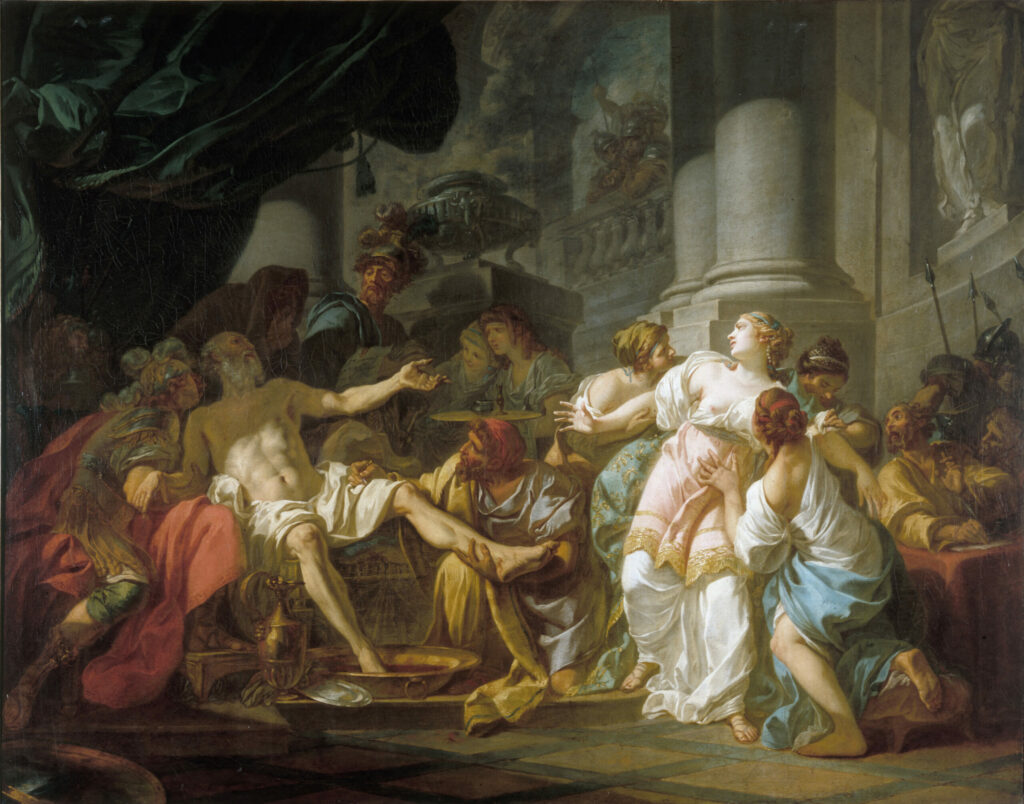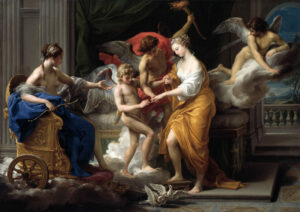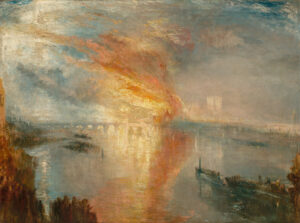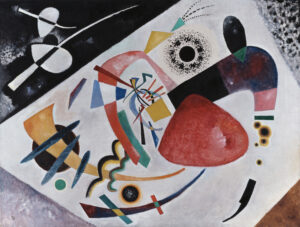
In this painting, we have a theatrical and dramatic staging of a crucial philosophical moment. David plunges us into the final moment of the great Roman Stoic with an orchestration of bodies and emotions.
At the center, Seneca, condemned by Nero, faces death with serene dignity as blood flows from his opened veins. His half-naked body surrenders in an elegant pose that evokes baroque aesthetics more than Stoic sobriety. Around him gravitate figures with theatrical attitudes, where emotion can be read in every gesture: his wife Paulina being led away by servants, the physician busily hastening the inevitable, the disciple noting his final words, the slave presenting him with poison. The swirling composition is enhanced by a shimmering palette of pinks and blues that contrasts strangely with the gravity of the subject. The sumptuous draperies, imposing columns, and palatial architecture create a lavish setting that still betrays the rococo influence that David would later abandon.
Further information
- The Death of Seneca, by Jacques-Louis David, in 1773
- 123 x 160 cm
- Paris Museums, Petit Palais, Fine Arts Museum of the City of Paris, displayed on the Garden Level Room 12
- https://www.parismuseescollections.paris.fr/fr/petit-palais/oeuvres/la-mort-de-seneque
Jacques-Louis David (1748-1825) created this work in 1773 for his third attempt at the Grand Prix de Rome, a prestigious competition that he would again fail to win that year. Irony of fate, this canvas that did not convince the academic jury represents a turning point in his career. It was only the following year that David would finally obtain the coveted Prize, opening the way to his Roman sojourn that would profoundly transform him. Far from the Rococo frivolities visible here, he would then become the undisputed master of French neoclassicism, revolutionizing historical painting through the rigor and austerity he would draw from Antiquity.






